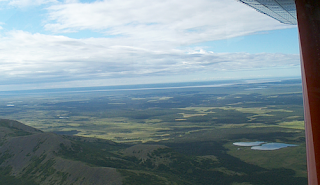 |
| Jan Maklak, Digital Photography School |
***
Uh-oh, looks like I've painted myself into a corner--again. There's not a lot of information on the web about using Notan in photography and what's there is very old. I could approach it as post-processing, but many photographers feel that that's cheating. To them a true photo is a capture of the moment. And I can't say I disagree.Previously I talked about Notan--what it is and how it's used by artists. Here, in part 2, I planned to look at how it can be applied to photography. Granted, balancing light and dark values, as well as framing the picture, while capturing the image can be daunting, especially when you're starting out at photography.
So here's what information I did capture that photographers may find useful.
Available as a free ebook, Arthur Hammond's Pictorial Composition in Photography (American Photographic Publishing Company, 1920) is a small book with some big ideas. He prefaces his book by saying,
To tell a photographer how to compose his pictures is like telling a musician how to compose music, an author how to write a novel or an actor how to act a part. Such things can only grow out of the fulness and experience of life.
Another book relating Notan and photography, one that was elusive, is The Command to Look: A Formula for Picture Success (Camera Craft Publishing Company, 1937) by William Mortensen. This link is to a PDF file with photos of the book, somehow very fitting.
As for framing your shots, you can look at these articles, but it seems to me the information in the 2 books above is more useful. Article 1: Framing Your Shots – Photography Composition Technique. Article 2: 25 Images Using Framing in Composition – Weekly Inspiration. While article number 2 takes the word framing quite literally, not putting boundaries on your photo works too.
***
 |
| M.Farkas Fowler, On the way to Dillingham |
***
For an idea of the workflow involved in digital post-processing, take a look at some of the articles on this photo.net page.
-- Marge

No comments:
Post a Comment